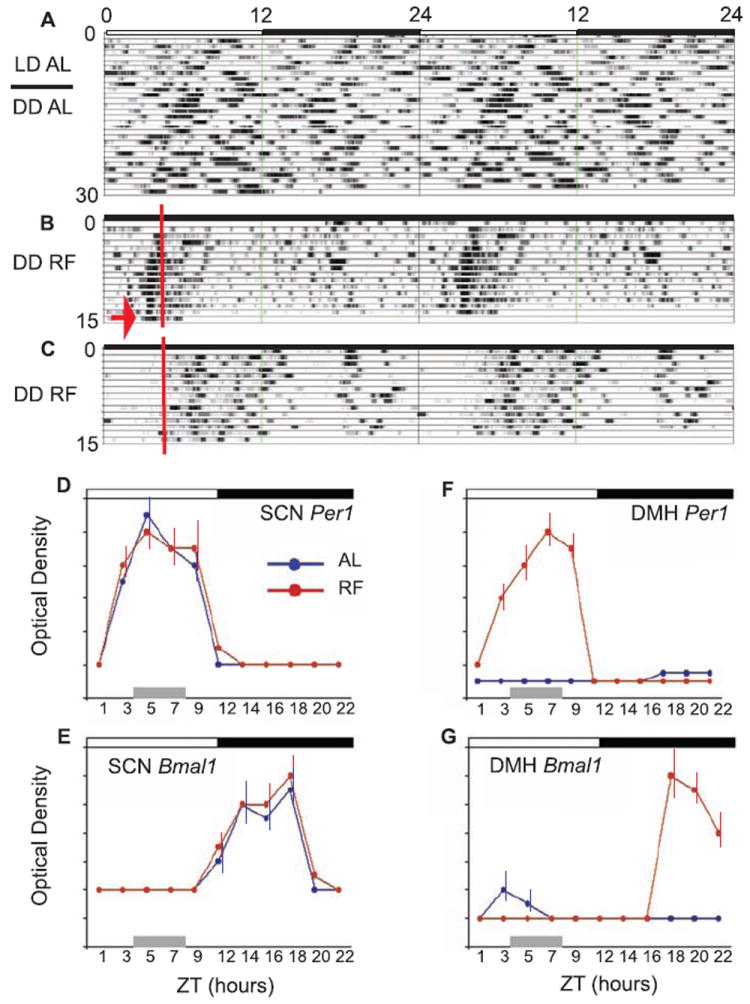Fig. 3.

AAV-Bmal1 injection into the DMH rescues food entrainment but not light entrainment in Bmal1−/− mice. (A) A double-plotted actigram of Tb from a Bmal1−/− mouse after bilateral injections of AAV-Bmal1 into the DMH. These mice demonstrate the lack of entrainment to the light-dark (LD) cycle and persisting ultradian rhythmicity in constant darkness (DD) under AL feeding conditions (Fig. 1B). These same mice, however, demonstrated anticipation and entrainment (B) to a RF cycle (red line, food presentation) in DD conditions (arrow, last day, no food given). By contrast, noninjected Bmal1−/− mice (C) did not demonstrate anticipation or entrainment to the RF cycle. (D to G) Per1 and Bmal1 gene expression (optical density, mean ± SEM; n = 3 mice per time point) in WT mice across the circadian day under both AL and RF (all data 12:12 LD) at 2-hour intervals, except for a 3-hour interval between ZT9-12. (D) Per1 expression in the SCN showed a peak at ~ ZT6 under both AL and RF (gray bar, ZT4-8) conditions, demonstrating that the SCN remained phase-locked to the LD cycle during RF. (E) Bmal1 expression in the SCN showed a peak at ~ZT18 under both AL and RF, further indicating that the SCN remained synchronized to the LD cycle during RF. (F) Per1 expression in the DMH was undetectable at all ZT under AL; by contrast, Per1 expression was sharply up-regulated by RF, with a peak at ~ZT7-8. (G) Bmal1 expression in the DMH was also undetectable at all ZT (except very modest expression ~ZT 3-5) under AL, however, and similar to Per1, during RF Bmal1 demonstrated up-regulation with a peak at ~ ZT18.
